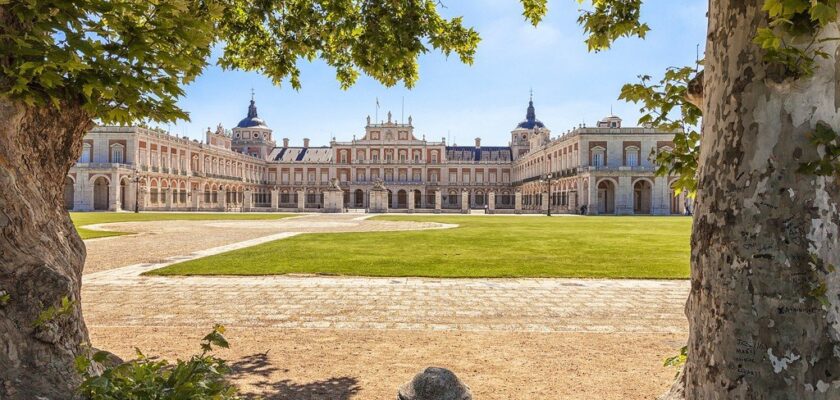Royal Palace in Madrid (Palacio Real)
The Royal Palace is not the most harmonious and refined of Spanish palaces, but it is characterized by royal luxury. The palace was built on the site of a ninth-century Moorish fortress. It became the royal residence in 1561, but was rebuilt after a fire. Three Italian and several French architects completed the reconstruction in 1734. The palace now fully met the tastes of the Bourbons (p. 34). The interior was filled with 18th-century Baroque and Rococo originals. King Alfonso XIII lived here until 1931, and the building is now used for state ceremonies.
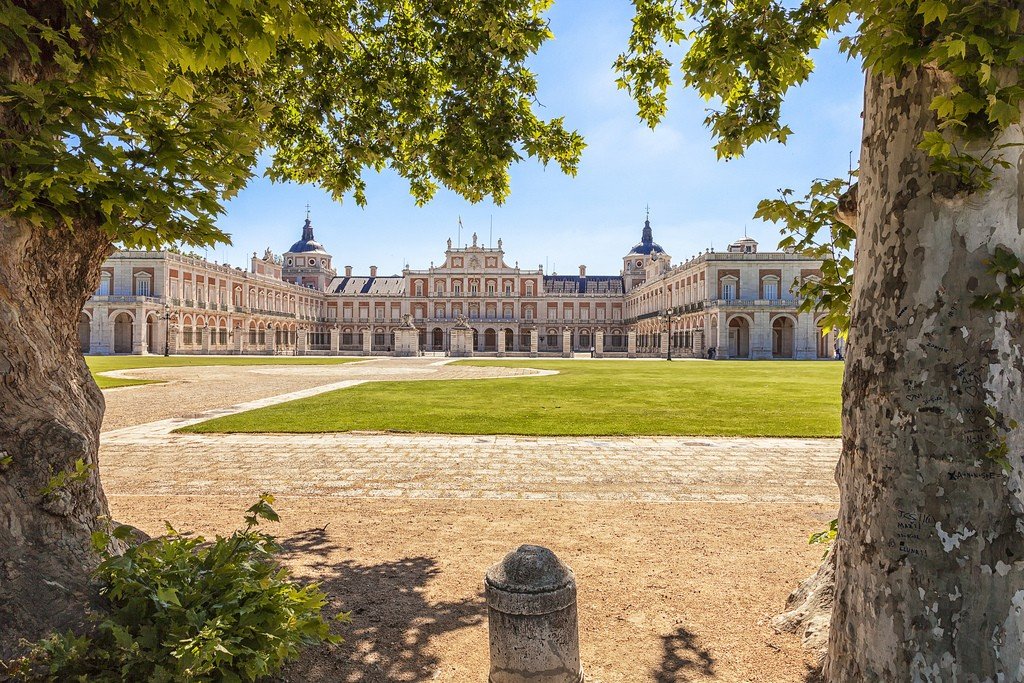
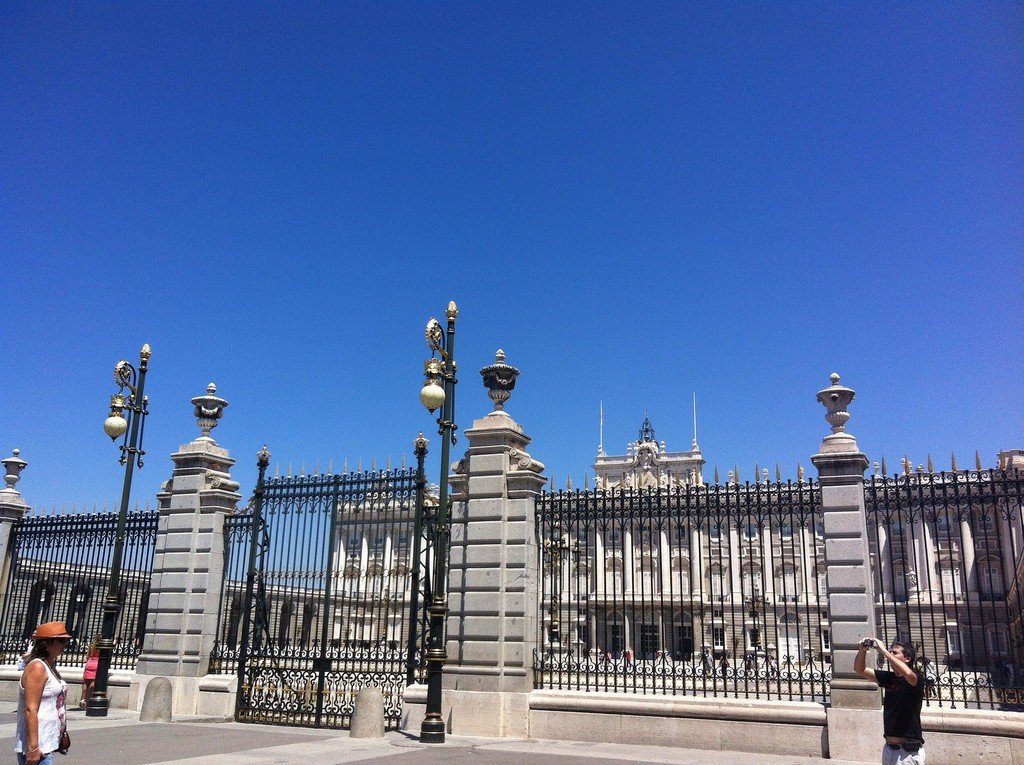
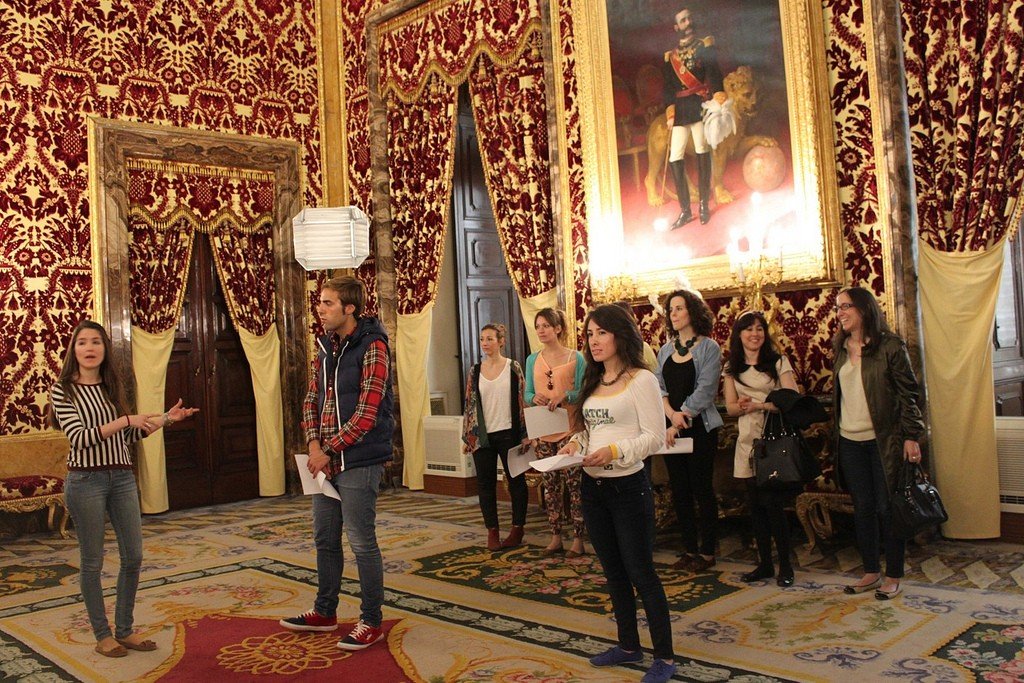
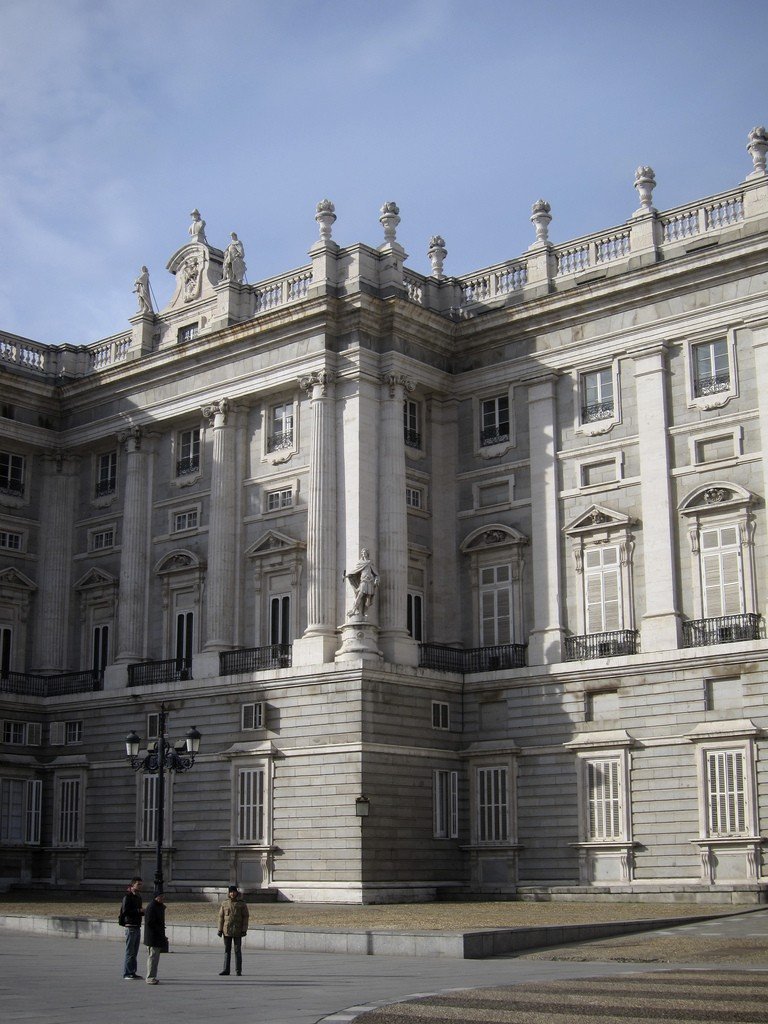
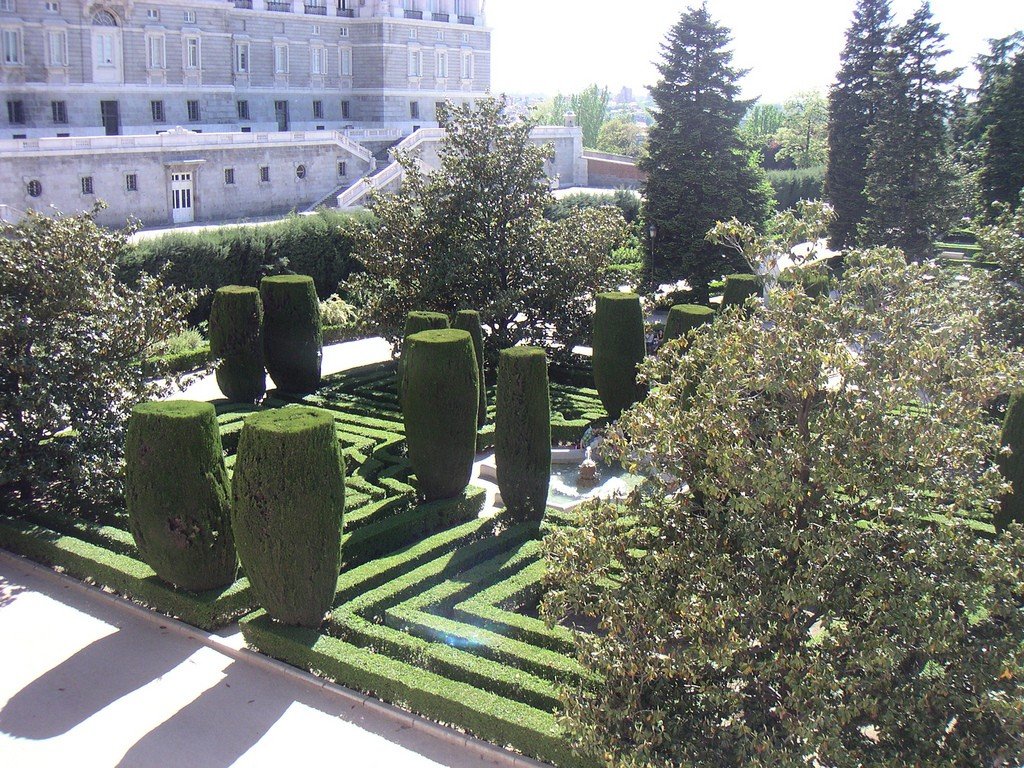
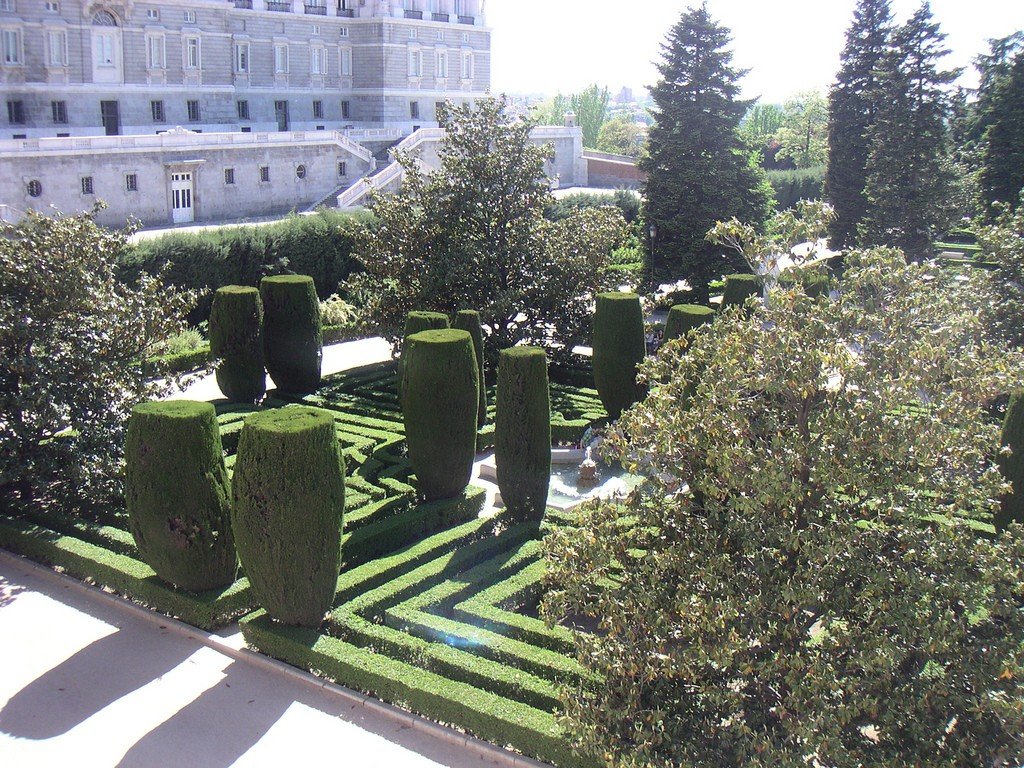
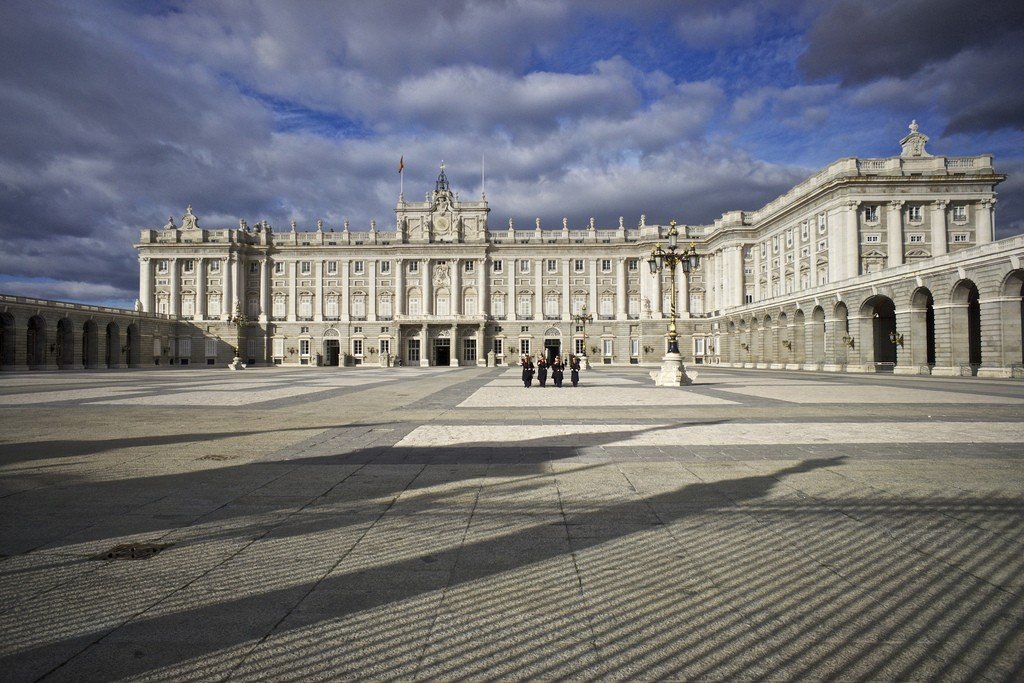
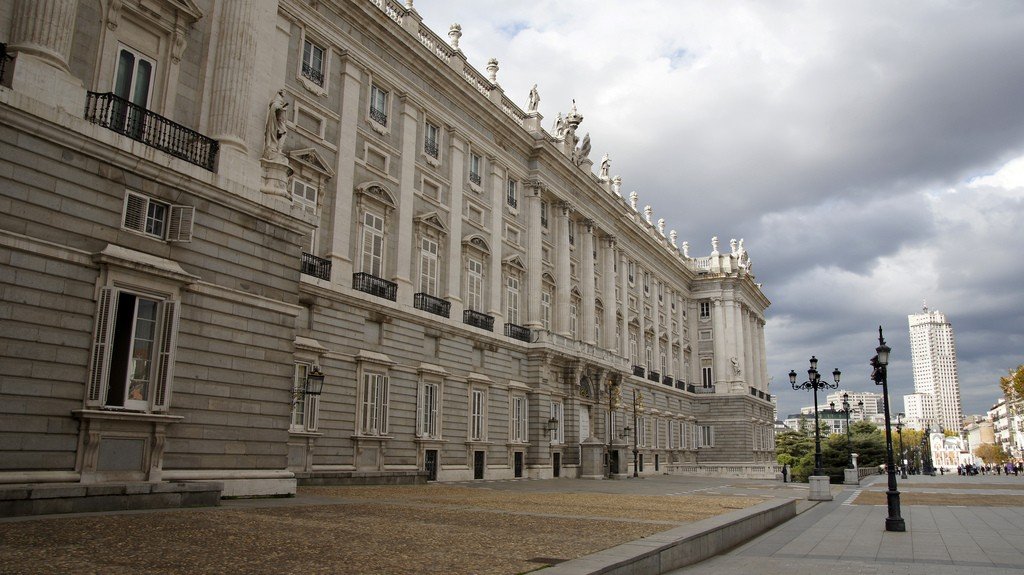
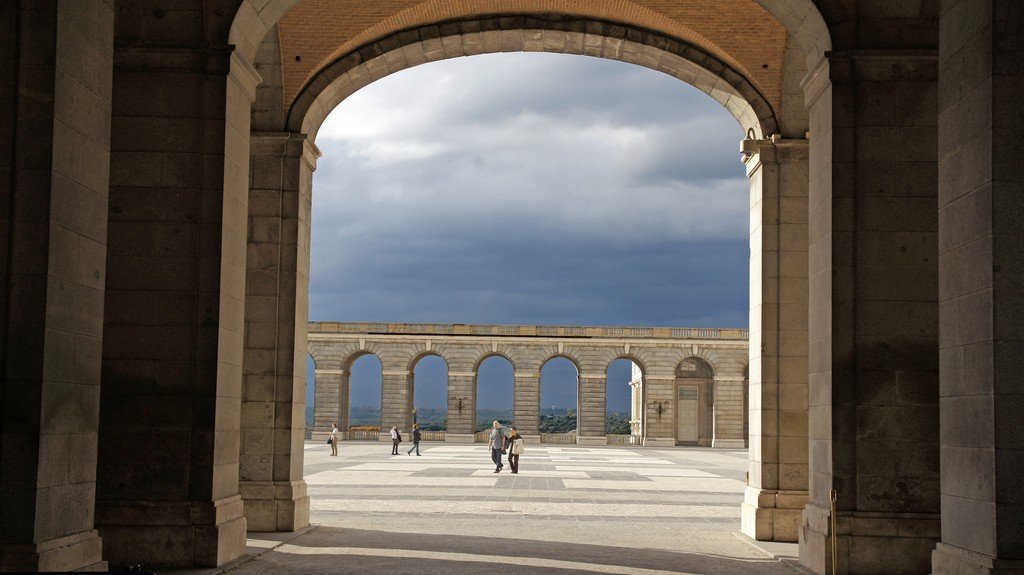
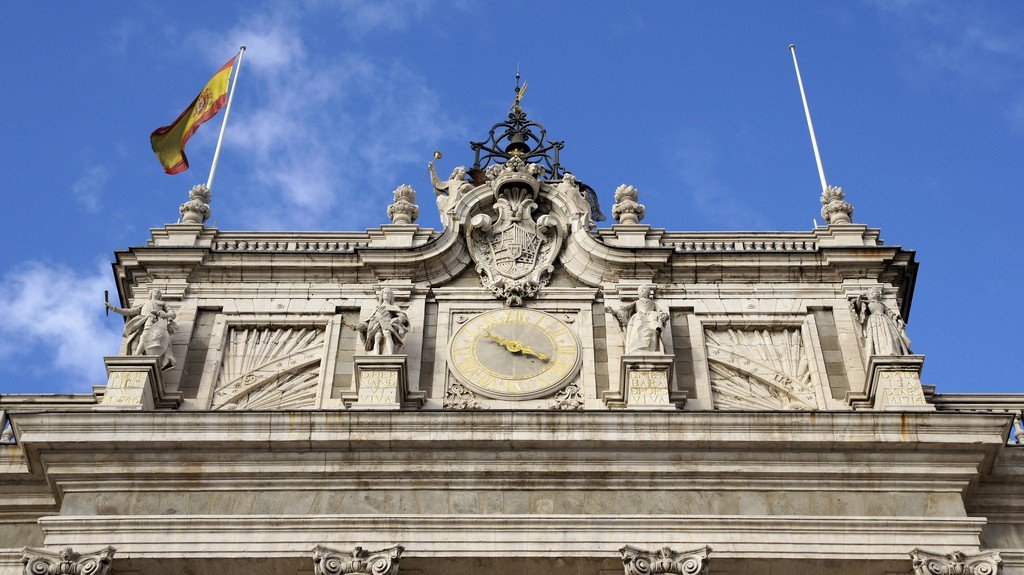
General information
Tel: 91 454 38 00.Daily 10.00-20.00 (Apr.-Sept.); 10.00-18.00 (Oct.-March).Entrance fee; guided tours in English.Metro: Opera
.From the entrance in front of the cathedral one enters a vast courtyard, at the end of which a large staircase leads to the royal chambers. The palace was built of white stone and granite brought from the Sierra de Guadarrama, and the interiors are finished in beautiful marble. From the Hall of the Alberdiers (Royal Guard), where the ceiling is painted by Giovanni Batista Tiepolo (1696-1770), we move to the magnificent Hall of Columns. Its walls are decorated with Flemish tapestries of the XVII century and statues symbolizing the planets. Here in 1975 Franco’s body was displayed for farewell, and in 1985 the official ceremony of Spain’s accession to the EU took place. Visit the sumptuous Throne Room, where the plafond painted by Tiepolo bears the “Apotheosis of the Spanish Monarchy” and underneath it Neapolitan furniture, Venetian candelabras, mirrors, clocks from San Ildefonso de la Granja and bronze lions by Benicelli.
.Next are the royal chambers: reception room, dining room, dressing room and bedroom, filled with precious trinkets and furniture, mostly French. Among the paintings are portraits of Charles IV and his wife Maria Luisa by Goya. In the Dining Room, look out for the marvelous marble, bronze and mahogany clock with a dial studded with diamonds. The Cloakroom was designed by Italian decorator Gasparini in the Rococo style. The abundance of silk, gold and silver in the upholstery of the walls, the mosaic marble floor with a whirlpool of floral ornaments, and the fanciful ceiling moldings served as a setting for the ceremony of the sovereign’s daily dressing in front of the courtiers. The bedroom has now been converted into a drawing room and is furnished with white and gold Empire furniture; the plafond painting by Vicente Lopez contains reminders of the orders instituted by Charles III.
.What follows is a series of unique rooms, starting with the small Porcelain Room. Its walls are covered with porcelain panels made in the Buen Retiro factory, founded by Charles III, and decorated with images of grapes and flower garlands. The next door leads to the Yellow Room with wonderful tapestries. Here the ladies treated themselves to chocolate while their cavaliers in the Porcelain Room smoked pipes.
Next is the magnificent Ballroom, for which three smaller rooms were combined in 1879, under Alfonso XII. They were intended for the wife of Charles III, but after her early death, by order of the king, stood closed for more than 100 years. Today it is a banquet hall for 150 people. On the plafond of the hall is an image of Christopher Columbus announcing to Fernando and Isabella the discovery of the New World. Along the walls, covered with Flemish tapestries of the 16th century, are huge Chinese and French vases..
The Music Salon displays a unique collection of stringed instruments by Antonio Stradivari (1644-1737). Note the mother-of-pearl guitar from 1796.The Silver Hall with its collection of silverware is followed by the Royal Chapel (Capilla Real). The huge marble columns with gilding were made in the neoclassical style by the master Ventura Rodriguez. The last four small rooms belonged to Maria Luisa: a porcelain smoking room, a Chinese salon and a cozy study with marble inlay and painted silk panels on the ceiling.
.